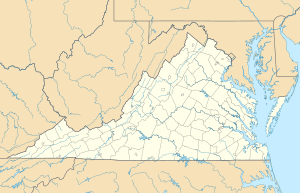James River National Wildlife Refuge facts for kids
Quick facts for kids James River National Wildlife Refuge |
|
|---|---|
|
IUCN Category IV (Habitat/Species Management Area)
|
|
 |
|
| Location | Prince George County, Virginia, United States |
| Nearest city | Hopewell, Virginia |
| Area | 4,200 acres (17 km2) |
| Established | 1991 |
| Governing body | U.S. Fish and Wildlife Service |
| Website | James River National Wildlife Refuge |
The James River National Wildlife Refuge is a special place in Prince George County, Virginia, USA, where nature is protected. It's located right along the beautiful James River in eastern Virginia. This refuge is managed by the United States Fish and Wildlife Service, an important group that helps take care of America's wild animals and their homes.
Contents
Discover the James River Wildlife Refuge
The James River National Wildlife Refuge is one of four refuges that make up the Eastern Virginia Rivers National Wildlife Refuge Complex. These refuges work together to protect important natural areas. The James River refuge was created in 1991. Its main goal was to protect the places where bald eagles build their nests and rest.
A Safe Home for Wildlife
This refuge covers about 4,200 acres (or 17 square kilometers) of land. It includes both thick forests and important wetlands. Wetlands are areas where water covers the soil, like swamps or marshes. These different habitats provide homes for many kinds of plants and animals. The refuge is bordered by Powell Creek to the west. To the east, it touches the historic Flowerdew Hundred Plantation.
Protecting Our National Bird
The bald eagle is the national bird of the United States. These majestic birds need safe places to live, especially for nesting and roosting. Roosting is when birds gather to rest or sleep. The James River National Wildlife Refuge was specifically set up to keep these vital areas safe from new buildings or other human activities. This helps ensure that bald eagles can continue to thrive.
A Glimpse into History
The land where the refuge now stands has a long and interesting history. It was once the site of Powellbrooke Plantation. Captain Nathaniel Powell, one of the first colonists who arrived in 1607, owned this plantation. In 1622, a difficult event occurred where Captain Powell, his wife, and ten other people lost their lives. Later, during the colonial period, this land became part of Merchant's Hope Plantation. Today, it is a protected area, preserving both nature and a piece of the past.



